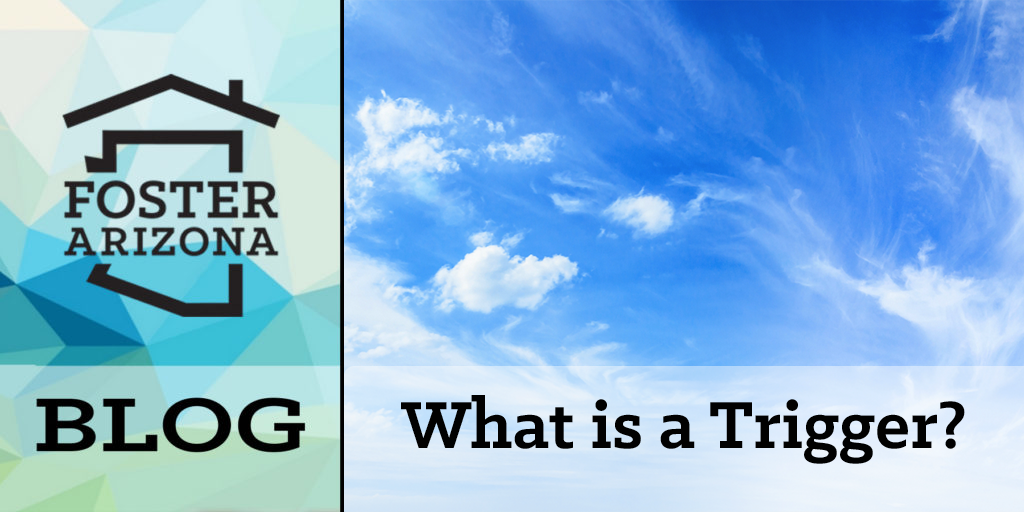A ‘trigger’ happens when an interaction or event causes an incongruent emotional response. For example, some juice is spilled and we fly into a rage. Even though a spill can be annoying, it is a minor one that can easily be remedied. We are most susceptible to triggers when we are experiencing physical discomforts like exhaustion, hunger, or stress. But why do some people seem to get easily triggered? Well, think of yourself as a cup that can hold emotions. When we go through difficult or painful experiences in our life, our cup can fill with strong emotions and although over time some might dissipate, particularly strong ones hang around unless we can find a way to ‘resolve’ them. The cup’s ability to hold more represents our level of tolerance. When the cup is full to the brim, any little drop or push can spill it over. This especially happens when the situation feels emotionally similar to an unresolved event. For example, if earlier in life we experienced betrayal through a lying ex-partner, or parents who did not follow through on promises, then we might become triggered when our child lies. Especially when those issues stem from childhood, the ‘trigger’ has the ability to transport us back into the time to an unresolved event. This ‘trigger’ might have the power to kicks us into a ‘fight or flight’ response and we become angry, yelling and attacking the child, rather than calmly redirecting or teaching. Triggers can be internal or external.
INTERNAL
Internal triggers are typically experienced in our body through sensation or emotion. For example, if there is a stressful situation like an upcoming test or interview, we might get anxious thoughts like “What if I fail” or “I probably won’t get that job”. This leads our body to tense up, heart rate to go up, and we feel the emotions of disappointment or stress as if it were already happening. The ‘trigger’ was just a thought that happened internally but our body responds like it is actually happening in real life. This happens especially often with the ‘anxious brain’, or with individuals who have experienced a lot of trauma or toxic stress, as they tend to ‘expect the worst’. It’s almost like our brain has become conditioned to automatically think of the worst outcome, and accept it as a ‘reality’ even though it isn’t so. Our body can’t tell the difference between something that is being observed in real life, or just in our head- if it is a stressful scenario, then it yields a stress response.
EXTERNAL
External triggers are things that happen outside of us that might feel threatening (emotionally or physically). Sometimes it is a type of smell, taste, or sound that connects us to a past memory. For example, have you ever listened to a particular song that reminds you of a person, place, or experience? This connection is made with both pleasant and unpleasant experiences, but in the case of a traumatic experience, we might be ‘triggered’ and feel a surge of emotion overwhelm us. Sometimes, we’ll even get flashes of images of what happened in the past. Common triggers might include noises like yelling, banging, or slamming a door. Sometimes it’s as subtle as someone’s tone of voice or demeanor. In the moment, we might not realize our survival brain has kicked in because it’s associating the event with unresolved trauma. Sometimes we can recognize why something bothers us so much but can’t seem to stop our ‘overresponse’ because the survival instinct overrides our logic. Sometimes the ‘trigger’ is rooted deep in our subconscious memory and it’s hard to make sense about why something bothers us so much. We might decide the situation must warrant our response and look for reasons to justify it by putting the responsibility on the individual for ‘making us’ upset. Unfortunately, that is equivalent to handing others the key to our peace of mind, an awfully terrible idea, particularly if that individual happens to be a child or individual with their own set of emotional challenges.
WHAT TO DO?
First, we must recognize that we alone can gain control of our response. Yes, others might be doing or saying things that are unkind or abusive, but expecting the abusive person to take responsibility for our emotional state is like asking a robber to hold our money. If we are a parent, it is also OUR duty to teach our children self-control by modeling (actions speak louder than words). This is not to say we should not express emotion- quite the opposite, it’s about choosing HOW to manage it rather than allowing it to manage us. In order to get there, we must start by first recognizing the issue, and paying attention to when we are triggered. It is also really important that we do not allow ourselves to fall into the trap of shame and guilt over past responses. We are faulty humans after all and self-regulation is a life-long journey. Rather than becoming critical of our response (or past responses), be curious. Learn to slow down, and question your thoughts. When a person’s response ‘triggers’ you, notice the thoughts and feelings that come up. We might think “This kid is testing me” and “I need to show them who’s boss”. Those thoughts are assuming that we know exactly what is going on in that person’s brain and unless you are psychic, you are likely not guessing the entire truth. A defensive or accusatory response might trigger them, and the situation escalates from there, ultimately leading to a bigger mess. Conversely, when we catch ourselves and question our thoughts, we actually can better assess the situation and more likely to respond in a way that helps the situation.
For example, your teen comes home from school, slams the front door, launches their book bag on the floor, and stomps down the hall. You recall their disappointment this morning when you had declined them permission to go to a friend’s house after school and gather that they are angry about that. You holler at them and receive no response. After a few minutes, you go down the hall where you run into them and immediately begin lecturing about respect and threaten to take all future visits with friends. They become angry and begin yelling back at you, which escalates the situation and a huge argument ensues. Had you slowed down, acknowledged the trigger, and then approached with curiosity, you might have discovered your teen had been needing the restroom and was rushing in to avoid having an accident.
Triggers can elicit strong, vulnerable emotions that can create a defensive anger response. But feelings are meant to inform us, not guide us. It’s important to learn how to detect them and manage them early on before they overwhelm us. This requires us to be aware of what we are experiencing in our bodies and finding ways of regulating ourselves. When you experience an emotion, where do you feel it? What does it feel like? Is it tight? Heavy? Empty? Buzzy? Hot? Get curious about this and then explore ways to shift them. What happens when you take a deep breath? Tighten and release your muscles? Shake off your body? Breathwork is one of the most useful ways to regulate. When we are under stress we tend to make quicker, more shallow breaths. Slow down, deepen your breathing and challenge your thoughts. Remind your body that you are not in the past. Bring awareness of the present to your brain by using your 5 senses (identify what you see, feel, hear, smell, taste in the now). Of course, if you have unresolved trauma, find a mental health professional to help you address that. When we learn self-control, we gain power over our lives and can better influence the outcome.
Contributor
 Estefana Johnson has worked in the mental health field for over 18 years. She has worked with a variety of populations from at-risk youth in a residential setting, outpatient treatment to discharge planning in a hospital setting.
Estefana Johnson has worked in the mental health field for over 18 years. She has worked with a variety of populations from at-risk youth in a residential setting, outpatient treatment to discharge planning in a hospital setting.
Estefana is a Certified Master Accelerated Resolution Therapist and Certified National ART Trainer, who is currently practicing at Lighthouse Psychiatry. Estefana also serves as a Board member and is the Clinical Director for ASA Now, a non-profit organization dedicated to providing support, advocacy, and assistance to children who have experienced foster care and their families. She provides consultation for providers, training for foster families, and has presented at multiple conferences.
